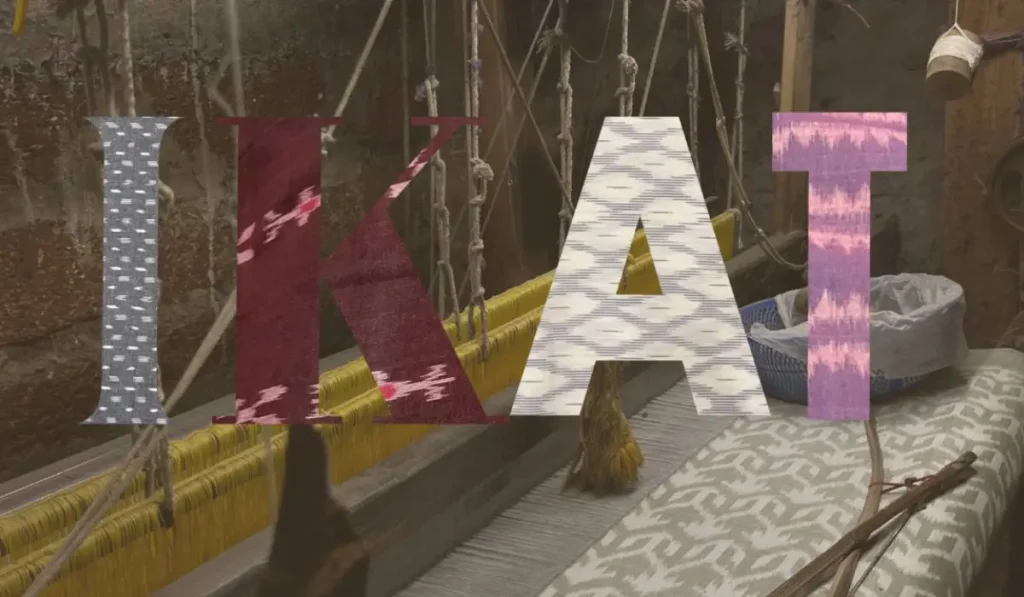Ikat, known as Bandha in Odisha, is more than just a fabric, it is a deep-rooted cultural expression that showcases the state’s rich artistic heritage. Odias take immense pride in their handloom traditions, and Sambalpuri Ikat holds a special place in their hearts. Unlike mass-produced fabrics, Ikat is handcrafted with precision, featuring intricate motifs inspired by nature, mythology, and spirituality. The signature tie-dye process creates mesmerizing patterns that exude elegance and exclusivity, making these weaves highly sought after for festivals, weddings, and special occasions. Many Odias perceive Ikat as a symbol of sophistication and tradition, preferring its vibrant hues and unique craftsmanship over the generic factory-made outfits. The aesthetic appeal of Ikat lies in its depth of meaning, authenticity, and the sense of connection it fosters with Odisha’s artistic legacy.
Indian Ikats: A Global Icon
Indian Ikats captivate global audiences with their rich heritage, intricate craftsmanship, and seamless integration into contemporary fashion and interiors. Unlike other Ikat traditions, Indian artisans create diverse patterns with deep cultural significance, using labor-intensive techniques that result in highly detailed and vibrant designs.
1. A Rich Variety of Styles
India’s Ikat traditions offer distinct designs, each with its unique appeal:
- Sambalpuri Ikat (Odisha): Weavers craft fluid, nature-inspired designs that tell stories through fabric, making it a global favourite.
- Pochampally Ikat (Telangana): Artisans create precise geometric patterns with sharp contrasts, making it an ideal choice for modern fashion and home décor.
- Patola Ikat (Gujarat): Skilled weavers meticulously execute the double Ikat technique, producing Patola sarees that textile connoisseurs and collectors worldwide seek as luxury handlooms.
2. A Blend of Tradition and Modern Design
Indian Ikats seamlessly merge heritage with contemporary aesthetics, attracting global designers who incorporate them into:
- Haute couture & runway fashion: International fashion houses transform Ikat fabrics into statement jackets, dresses, and accessories.
- Sustainable fashion: As demand for ethical and handmade textiles rises, eco-conscious consumers favor Indian Ikats.
- Home décor: Interior designers use Ikat patterns for cushion covers, curtains, and upholstery, adding a cultural touch to modern spaces.
3. Sustainable Craftsmanship with Natural Dyes
Indian weavers use eco-friendly techniques and natural dyes, making Ikats both sustainable and appealing to a global audience that values handcrafted, toxin-free textiles. Their vibrant yet earthy hues, derived from nature, attract buyers who prioritize organic and artisanal fabrics.
4. A Symbol of Heritage and Prestige
Patola sarees and Sambalpuri Ikats represent India’s textile legacy, with collectors, museums, and heritage enthusiasts valuing their exclusivity. These handwoven masterpieces continue to symbolize tradition and luxury in global markets.
5. Celebrity and Designer Influence
Indian and international celebrities, designers, and influencers showcase Indian Ikats on red carpets, social media, and fashion runways. This widespread recognition elevates Indian Ikats to an aspirational status, solidifying their place in global fashion and décor trends.
Odisha: The Elegance of Sambalpuri Ikat
Origins and Craftsmanship
Artisans in western Odisha, particularly in Sambalpur, Bargarh, Sonepur, and Boudh, have preserved the intricate craft of Sambalpuri Ikat for centuries. They meticulously tie and dye sections of yarn before weaving them into stunning patterns, ensuring that each piece reflects their deep-rooted expertise. Unlike geometric-focused Ikat from other regions, Odisha’s Ikat features fluid, curvilinear motifs that embody artistic spontaneity and spiritual depth.
Odisha is home to multiple Ikat weaving styles, each showcasing distinct characteristics. Apart from Sambalpuri Ikat, artisans also create Pasapalli Ikat, known for its striking checkerboard patterns, and Bomkai Ikat, which combines extra-weft weaving with Ikat-dyed yarns to produce exquisite motifs. Another variation, Khandua Ikat, holds cultural significance as the preferred fabric for Jagannath Temple rituals and is renowned for its script-laden patterns featuring verses from ancient texts. These diverse styles highlight the versatility and richness of Odisha’s Ikat tradition.
Symbolism and Motifs
Odisha’s Ikat designs draw inspiration from nature, mythology, and sacred geometry. Artisans incorporate motifs such as the Shankha (conch), Chakra (wheel), Phula (flower), and animals like elephants and peacocks—each carrying cultural and spiritual meanings. The Bichitrapuri weave blends various intricate designs, while the Pasapalli pattern represents prosperity through its signature chessboard-like appearance. Many weavers prefer bold colors such as red, black, and white, which enhance the fabric’s vibrancy and appeal.
Cultural Importance
Odias deeply value Sambalpuri Ikat silks as a marker of identity and heritage. They wear these exquisite weaves during festivals, weddings, and religious ceremonies, reinforcing their cultural pride. The textile gained national recognition when former Prime Minister Indira Gandhi frequently adorned Sambalpuri patta sarees, bringing Odisha’s weaving tradition into the limelight. Today, the craft thrives, evolving beyond sarees into contemporary outfits like dresses, jackets, and dupattas. The blend of tradition and modernity ensures that Odisha’s Ikat continues to captivate both local admirers and global fashion enthusiasts.
Telangana: The Precision of Pochampally Ikat
Historical Roots and Technique
Artisans in the Bhoodan Pochampally region of Telangana have mastered the art of weaving intricate Ikat patterns for generations. They use both single and double Ikat techniques, ensuring precise and symmetrical designs. Before dyeing the threads, they meticulously map out the patterns, applying mathematical accuracy to achieve crisp, well-defined motifs. Unlike other Ikat forms that showcase blurred edges, Pochampally Ikat stands out for its sharp and structured patterns.
Distinctive Features
Pochampally Ikat features striking geometric designs, including diamonds, zigzags, squares, and other symmetrical patterns. Weavers prefer bold and contrasting colour combinations such as red and yellow, black and white, or blue and green, enhancing the visual appeal of the fabric. In today’s era, Pochampally Ikat weavers continue to innovate with colors while preserving traditional aesthetics. Modern palettes include, Pastel shades – Soft hues like peach, lavender, mint green, and powder blue cater to contemporary tastes. Neon accents – Bright electric blues, pinks, and greens add a trendy, youthful appeal also some Earthy and muted tones – Beige, olive, rust, and deep browns resonate with sustainable fashion trends some Metallic infusions – Gold and silver threads subtly woven into the fabric lend a luxurious touch, making the Ikat suitable for festive and formal wear and the Monochrome variations – Black, grey, and off-white combinations create minimalist yet elegant designs, aligning with modern aesthetics. While Odisha’s Sambalpuri Ikat embraces fluid, curvilinear motifs, Pochampally Ikat focuses on structure and balance, making it distinct within India’s diverse Ikat traditions.
Cultural and Economic Significance
Pochampally Ikat defines Telangana’s cultural identity, with people proudly wearing these vibrant weaves during festivals and celebrations. Designers craft exquisite sarees, dupattas, shawls and contemporary fashion pieces using this timeless textile. The Geographical Indication (GI) tag safeguards its authenticity and preserves its legacy. Today, Pochampally Ikat goes beyond traditional attire, influencing home furnishings, accessories, and global fashion markets, seamlessly blending heritage with modern trends.
Gujarat: The Rich Heritage of Patola Ikat
The Royal Weave of Patan Patola
Patola Ikat stands as one of Gujarat’s most intricate and luxurious weaving traditions. Originating in Patan during the 12th century, artisans crafted these exquisite sarees for royal families and aristocrats. Weavers use the demanding double Ikat technique, meticulously dyeing both the warp and weft threads before weaving. This precision-intensive process makes Patola one of the most time-consuming and expensive handwoven textiles in the world.
Symbolism and Design
Patola sarees showcase elaborate motifs, including elephants, parrots, flowers, and geometric patterns, each carrying deep cultural and auspicious significance. Red symbolizes fertility and prosperity, while green represents life and nature. The Salvi weaving community has preserved this rare skill for generations, dedicating six months to a year to crafting a single saree.
Enduring Legacy
Once a status symbol among Gujarat’s elite, Patola sarees found their way to Southeast Asia and the Middle East through trade. Today, they continue to play a vital role in Gujarati weddings and religious ceremonies, embodying heritage and prestige. Despite its labor-intensive process, Patola remains a prized textile, with designers seamlessly incorporating its timeless motifs into contemporary fashion.
The Common Thread: Ikat as a Cultural Legacy
Regional Differences, Shared Heritage
Despite their distinct characteristics, Odisha’s Sambalpuri, Telangana’s Pochampally, and Gujarat’s Patola Ikats share a deep-rooted connection, an unwavering commitment to craftsmanship and tradition. Each region has developed its own signature designs, colors, and weaving techniques, yet all uphold the meticulous tie-and-dye process that defines Ikat. These handwoven masterpieces serve as more than just textiles; they embody the history, beliefs, and artistic sensibilities of their respective communities.
Craftsmanship That Transcends Time
Generations of artisans have preserved and perfected these intricate weaving techniques, passing them down as a sacred heritage. While Sambalpuri Ikat showcases fluid, nature-inspired motifs, Pochampally Ikat embraces sharp geometric precision, and Patola Ikat mesmerizes with its double Ikat complexity. Despite these variations, the dedication to maintaining authenticity and preserving traditional knowledge remains a common ethos among weavers.
Global Influence and Modern Adaptations
Indian Ikats have gained global recognition for their intricate craftsmanship, cultural significance, and adaptability across fashion and interior design. Weavers meticulously craft these textiles using age-old techniques that preserve India’s rich heritage while meeting contemporary style demands. Their diverse patterns, vibrant aesthetics, and unique tie-dye process make them a preferred choice for designers looking to blend tradition with modernity. From high fashion runways to artisanal home décor, Ikat continues to captivate audiences worldwide, proving its versatility across various industries.
As sustainable fashion gains momentum, Indian Ikats stand out for their eco-friendly production methods, often relying on natural dyes and handcrafted weaving techniques. This ethical approach appeals to conscious buyers who seek authenticity and craftsmanship in their purchases. With their deep-rooted heritage and ability to adapt to modern trends, Indian Ikats remain a timeless and highly sought-after textile. Whether in luxury couture or everyday fashion, these weaves continue to define elegance while carrying forward India’s rich artistic legacy.


